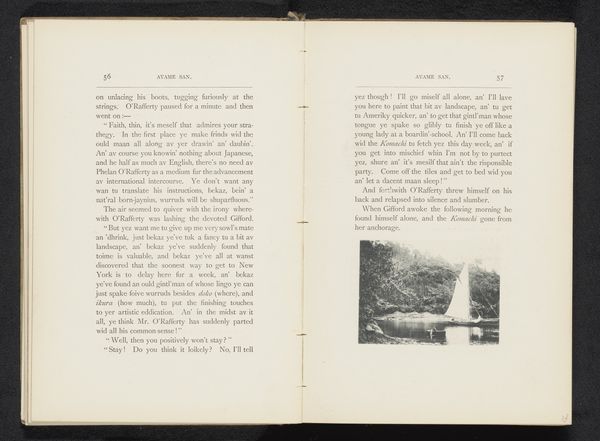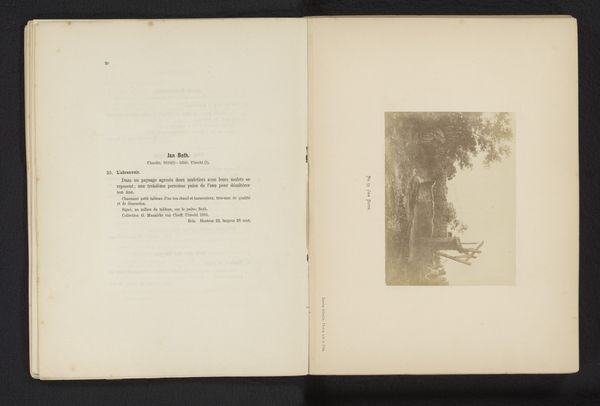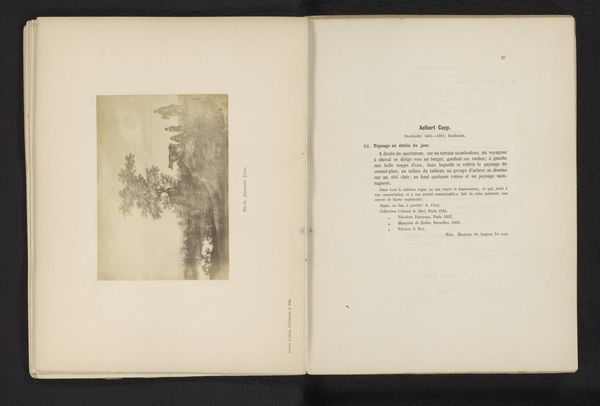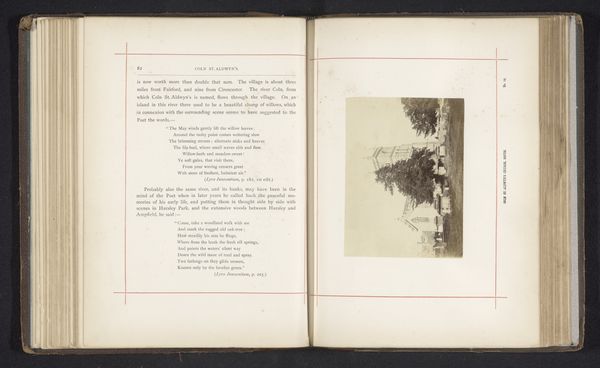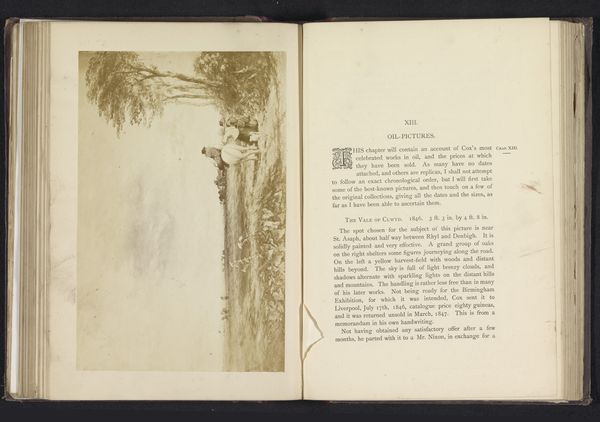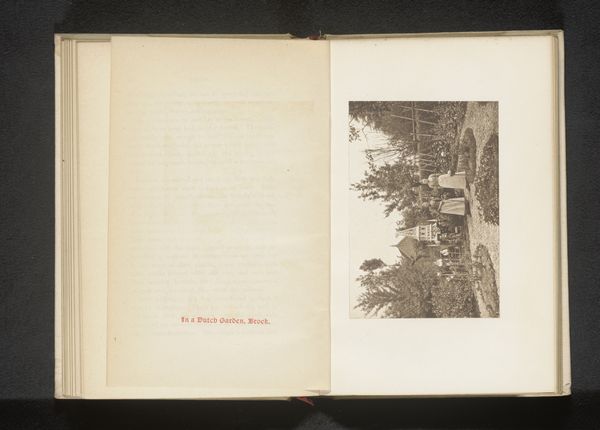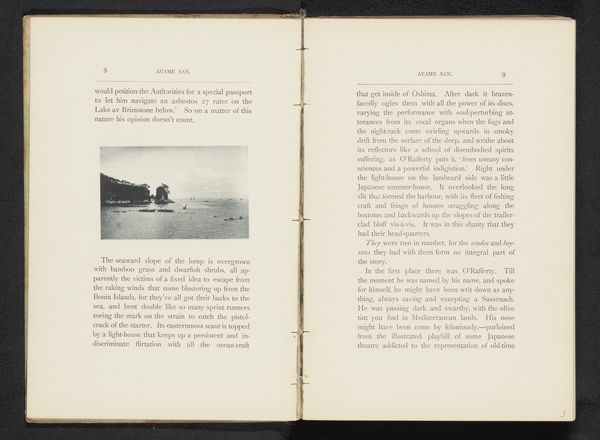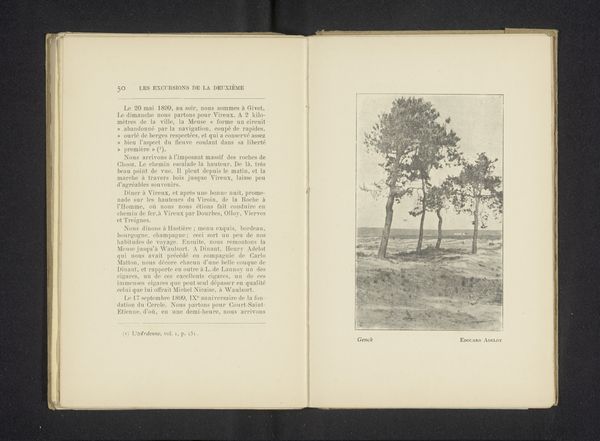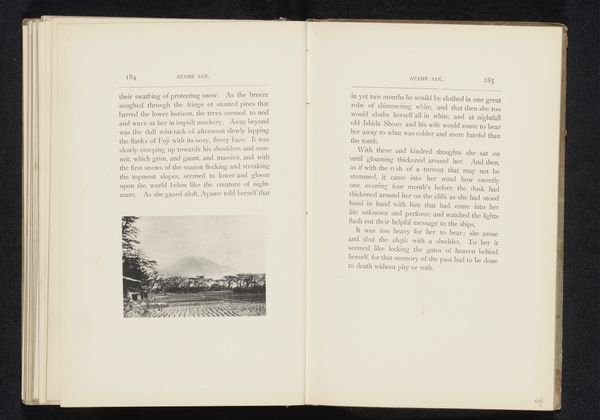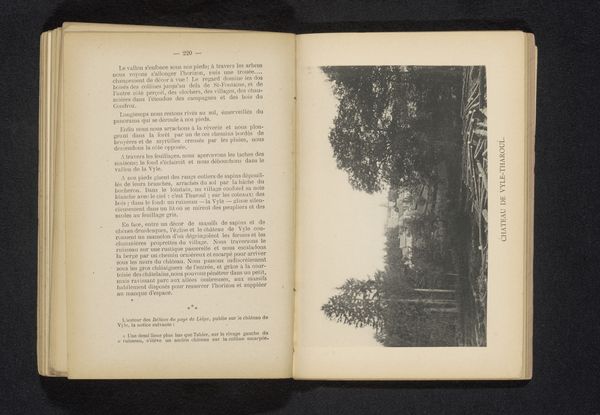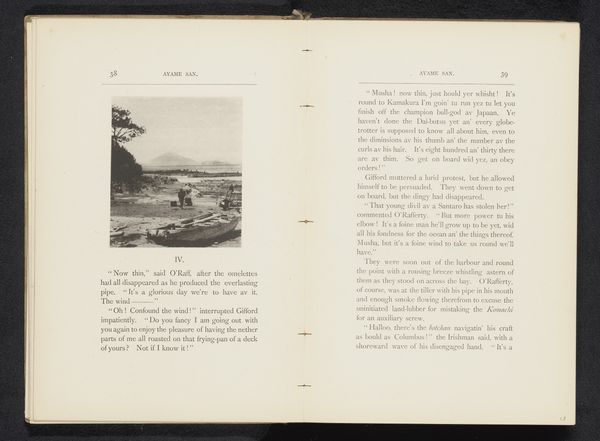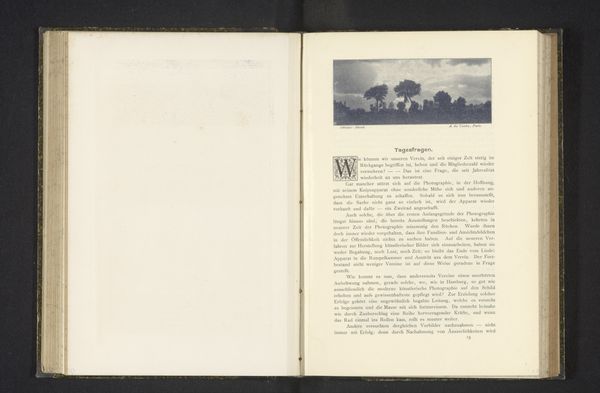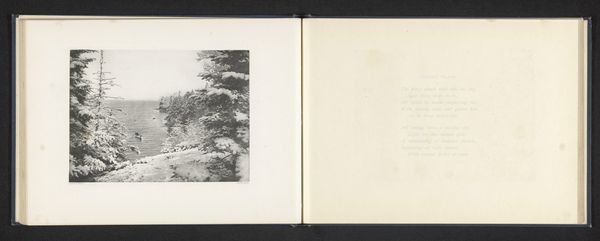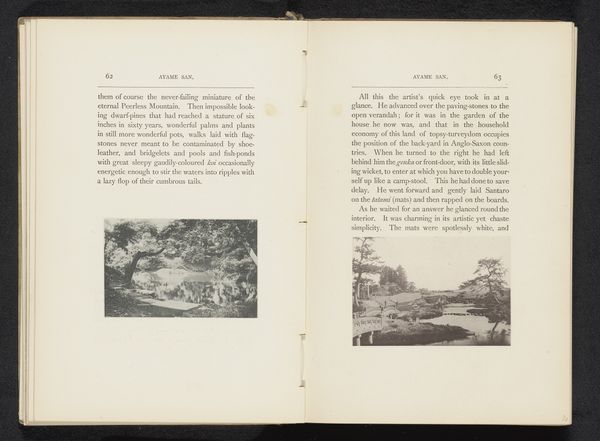
photography
#
landscape
#
photography
#
japonisme
Dimensions: height 103 mm, width 86 mm
Copyright: Rijks Museum: Open Domain
This photogravure of a Japanese pine, or "den," was created by William Kinnimond Burton, likely in the late 19th century. It's a process intimately tied to industrial advancements, combining photography with traditional printmaking techniques. To make it, a photograph was transferred onto a copper plate coated with a light-sensitive gelatin tissue, then etched with acid to varying depths. This plate was then inked and printed, creating the subtle tonal range we see here. Notice the texture, almost like a charcoal drawing. This is due to the etching process, which creates a physical surface on the plate. This photogravure process allowed for mass production, and that is key. Photography was still a relatively new medium, and by printing these images in books, Burton could disseminate his vision of Japan to a wider audience. The image itself speaks to Japan's growing role in global trade and cultural exchange during the Meiji era. It also shows us how technical processes can shape the very look and feel of an artwork. By understanding the means of production, we gain a richer appreciation for its meaning.
Comments
No comments
Be the first to comment and join the conversation on the ultimate creative platform.
